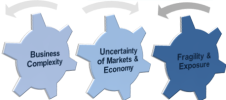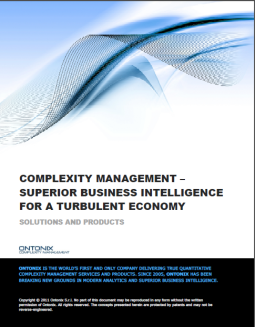Survey confirms concerns with supply chain insurance | FERMA
Tuesday, 10 January, 2012 Leave a comment
 This is a topic that has occupied much of my thinking (and writing) in recent years and I am still not convinced that the scale and nature of the risks are fully understood. NOW must be the time for another smart insurer (FM Global have already acted) to respond to their customers’ stated needs!
This is a topic that has occupied much of my thinking (and writing) in recent years and I am still not convinced that the scale and nature of the risks are fully understood. NOW must be the time for another smart insurer (FM Global have already acted) to respond to their customers’ stated needs!
Global logistics (and reverse logistics) have changed dramatically in the last decade and further changes with considerable insurance implications are predicted for the next 5 years. THE opportunity exists NOW, to address a major and growing problem for fragile global business networks in these uncertain times and in the, hopefully, less volatile times ahead.
How???
By embedding Ontonix "Complexity & Resilience risk technology" within Supply Chain solutions, that:
– extends the risk horizon into the Corporate ecosystem by analysing the structure in information within system (network) data
– enables rapid and regular measurement of the "health" of the system
– identifies areas of risk at source
enables the business owners to become “Risk Leaders”: measure; map; mitigate; manage; monitor, system complexity and resilience to:
– reduce risk
– reduce uncertainty
– gain "crisis anticipation" – supply chain intelligence may determine winners and losers!
– map causality
– manage exposures
– improve business & critical processes
– identify where redundancy required to [avoid fragility] to build/maintain system resilience
– to provide a quantitative basis for risk decision-making [sometimes counter-intuitive]
– to gain a transparent – secure – reliable – cost effective, means of frequent [risk/rating] data exchange
…thus enabling faster, better more robust risk decision-making
…an insurer offering truly innovative solutions can create sustainable competitive advantage for ALL stakeholders…
exceed customer needs for loss protection; improve customer insight – to aid profitability through business process improvement; facilitate and incentivise a culture of loss prevention – with a single Complexity KPI – that can be monitored at micro level across a single entity, entire business network or incorporate an holistic [macro] perspective.
Supply Networks and the Financial system (of which insurance is a significant part) provide the global infrastructure upon which, much of what we take for granted, is reliant. In inter-connected networks, risk, that is unrecognised and untreated is a source of fragility that is communicated to connected systems in the form of increased uncertainty. So, these man-made networks can [DO] serve as the conduit for systemic risk or can be maintained, as sources of systemic resilience.
Only resilient entities can claim to be sustainable as they retain the characteristics required to survive in the event of unforeseen man-made or unforeseeable natural events.
IF an insurers inability to satisfy recognised customer needs for improved cover, limits and speed of response, is based upon underwriting concerns about: current and future exposures; the impact of natural disasters upon global supply chains; financial uncertainty; effectiveness of existing risk management; adequacy, frequency or reliability of risk information, the choice is “simple”:
“shape up or ship out”!
FERMA board member Igor Mikhaylov commented: “In light of the current limitations of insurance, businesses need to apply risk management to the whole supply chain. Risks of partners and subcontractors should be considered to reduce their vulnerability to supply chain ruptures. Avoiding single points of failure is one of the most important targets of risk and business continuity management.”
Mikhaylov said that even the temporary loss of a single, small but critical component could affect a company’s products time to market, affecting market share and revenues if competitors had other sources of supply. He added that the floods in Thailand’s industrial parks, which continued into November, had highlighted other long term implications of dependence on limited sources of supply: the price of hard disk drives for computers and other electronic equipment had doubled.
via Survey confirms concerns with supply chain insurance | FERMA.
Related articles
- Governance – Risk – Compliance: accept responsibility to reap the rewards! (fitforrandomness.wordpress.com)
- What if "counterintuitive" is THE mark of a leader? (fitforrandomness.wordpress.com)
- UPDATED: Reducing complexity – should finance directors be leading the way? (fitforrandomness.wordpress.com)
- Presentation: deeper understanding by thinking in systems (fitforrandomness.wordpress.com)
- Global Supply Chain fragility [Procurement Intelligence Unit] (fitforrandomness.wordpress.com)
- Improve Profitability & Reduce Risk – Thrive in a Recession – Forbes (fitforrandomness.wordpress.com)
- There’s A Revolution Coming In Global Finance (businessinsider.com)
- Spend Matters Procurement Predictions: Five Scenarios For the Next Decade (Part 5-A) (spendmatters.com)












